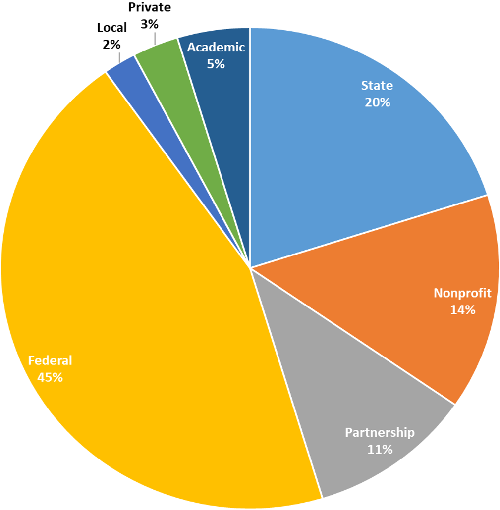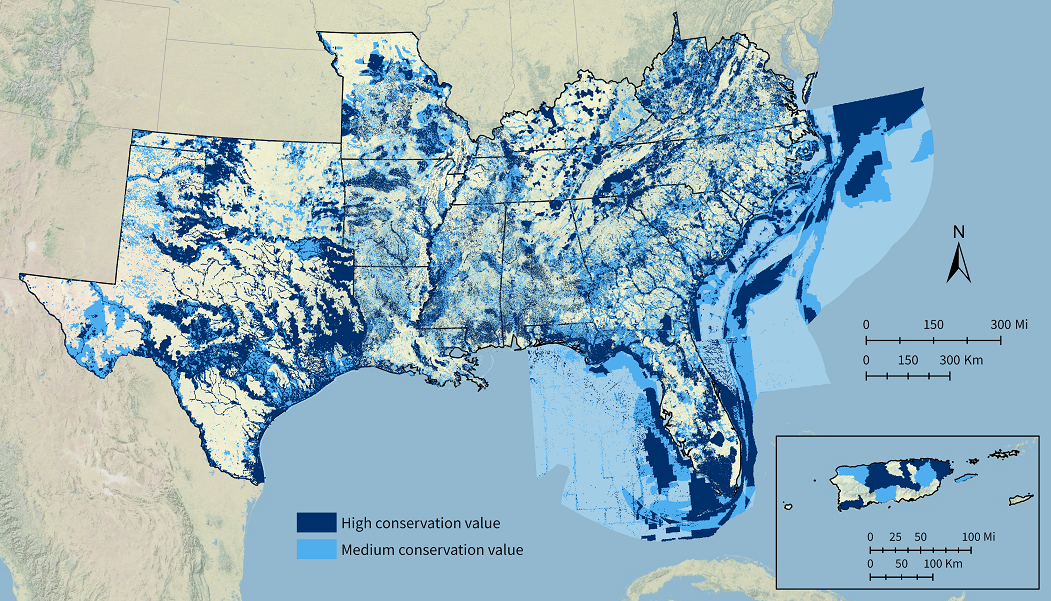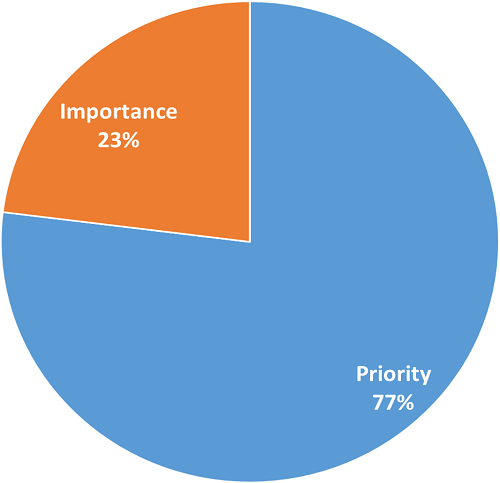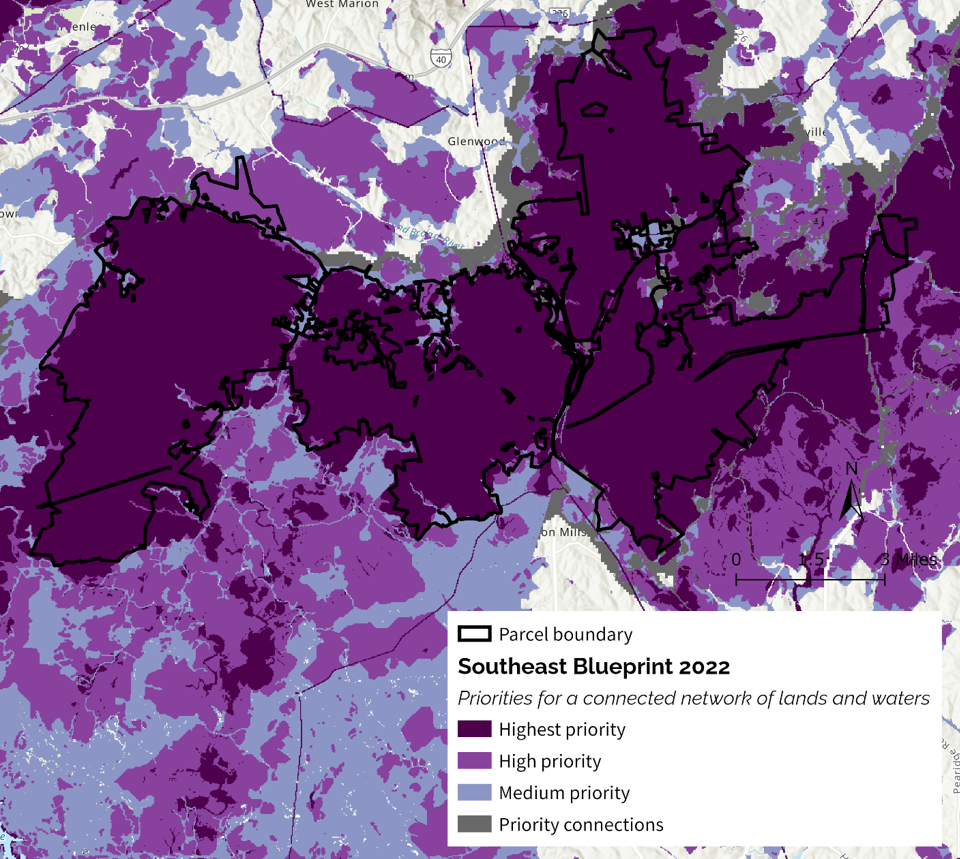Blueprint workshop attendance and wording poll results

The SECAS staff team had such an exciting and thought-provoking three weeks of virtual workshops to review Draft Southeast Conservation Blueprint 2022! Huge thanks to the 234 people from 80 organizations who attended and provided feedback. The chart above shows how attendance broke out across different sectors of the conservation community.
The primary focus of the workshop was gathering spatially explicit comments on where the Blueprint is underprioritizing, overprioritizing, or correctly prioritizing important areas for conservation. If you want to learn more about the spatial feedback provided by workshop attendees, and the fixes we’re hoping to implement this year based on that input, check out Rua’s blog.
Here I’m going to focus on another element of the workshop–collecting feedback on the wording we use to communicate the Blueprint. You’ve probably seen this map of the current Blueprint before:

It uses the words high and medium “conservation value” to characterize the most important places for conservation and restoration across the region. This wording represented a compromise across the science coordinators leading the development of all the various subregional inputs to the current Southeast Blueprint.
This year, as we transition to a more consistent approach using standardized methods and data across most of the Southeast, we had an opportunity to reevaluate how we describe the Blueprint priority classes. So, we polled a suite of Blueprint users, science communicators, and Blueprint staff to get their reactions to that phrase, “conservation value.” It became immediately clear that the term “value” means very different things to different people. To some, it evoked the idea of intrinsic worth. To others, it brought to mind an objective score or rating. Still others thought of economic value, which had negative connotations for some folks.
So, we came up with and tested a few alternatives that tied back to the SECAS vision of “a connected network of lands and waters that supports thriving fish and wildlife populations and improved quality of life for people.” The two frontrunners as we went into workshops were “priority for a connected network of lands and waters” and “importance for a connected network of lands and waters.” At the workshops, we asked all attendees to vote for the wording that they felt was the most clear and compelling.
Here are the results:

As you can see, “priority” was the most popular choice by a significant margin. So that’s what we’ll be using for this year’s Blueprint update (and beyond)! The resulting Blueprint map released this fall should look something like this:
